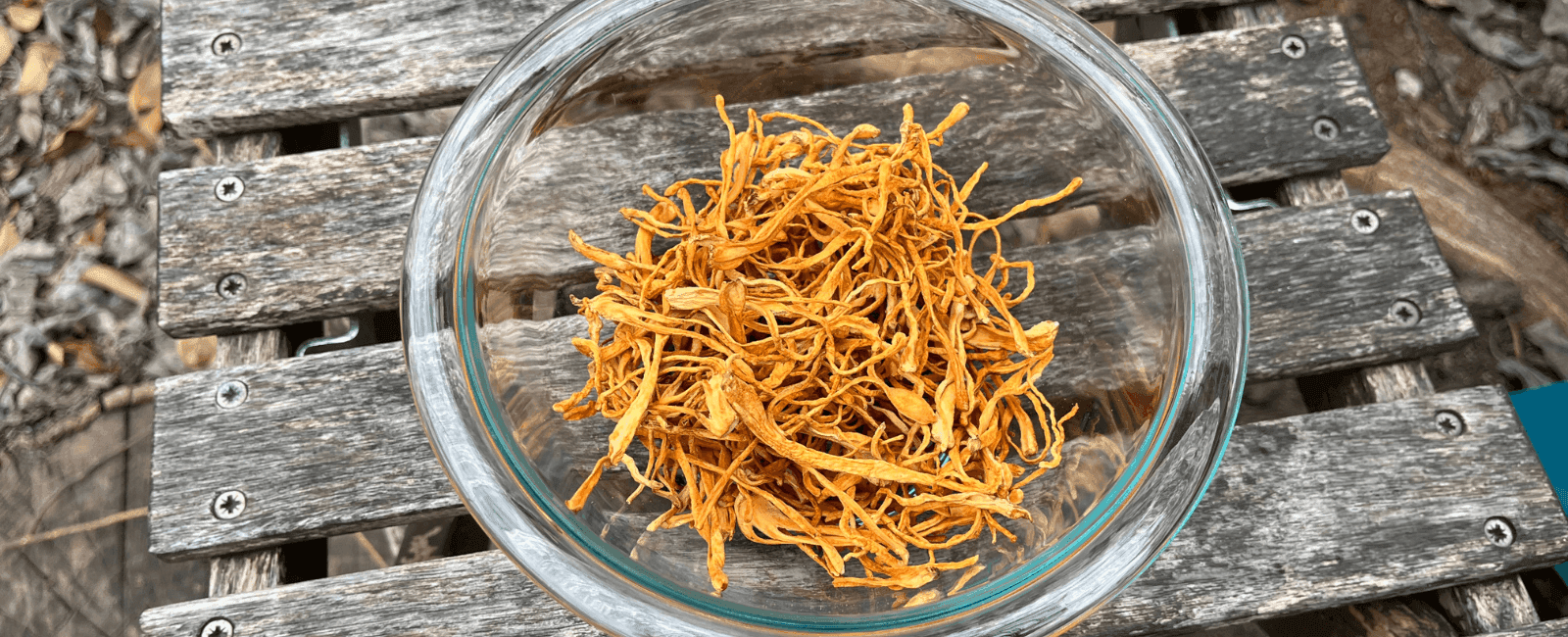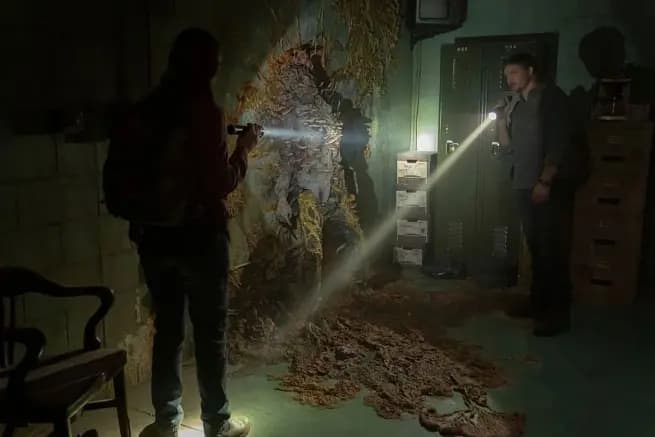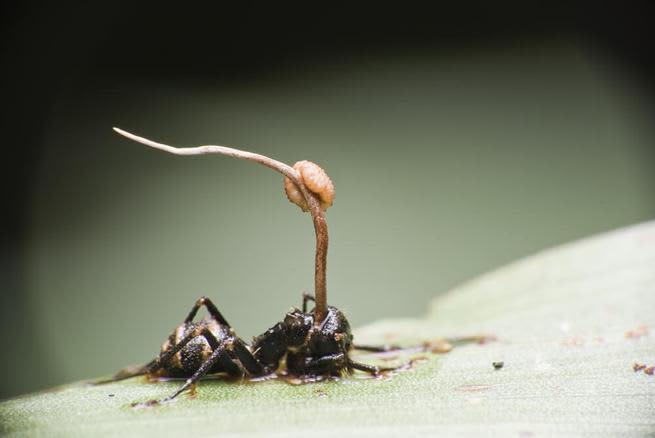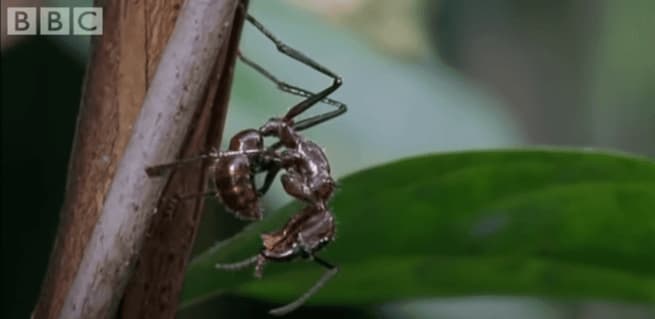

Praised for its stunning visuals, the highly-anticipated premiere of The Last of Us didn’t disappoint. Whether it was the intensely accurate retelling of the video game, the post-apocalyptic future, or Pedro Pascal, something drew us to it in record-breaking numbers on Sunday night.
The Last of Us drew 4.7 million viewers to the HBO series, according to Nielsen and first-party data through Vulture. Zoe Guy reports that “The Last of Us earned the second-largest debut audience since Boardwalk Empire premiered in 2011, behind only House of Dragon,” the prequel series to Game of Thrones.

Cordyceps also had a star moment on Google search, where it trended to its highest point in the last five years. The second highest trending search was when it was announced that The Last of Us would be adapted on HBO. Compared to more common mushrooms like chaga, lion’s mane, and reishi, the interest in cordyceps on Sunday night alone was more than fungi have seen.
The premise of The Last of Us
There are spoilers in this section.

In the game series and HBO Max series, a mind-controlling fungus has ravaged humanity for 20 years. Most of society is a bloodthirsty fungus-driven zombie, no one knows who to trust, and the infection is still vicious enough to require gas masks. Humans have figured out the disease has come from decades of eating infected grains, like cereal and bread, but there’s no cure in sight.
The infection has turned people into clickers, with the infected identified by the awful brainy, mushroom-looking growths coming from their heads. The Infected may be terrifying to look at, but their echolocation skills are the one benefit of the mutated strain of the infection, making them terribly effective at spreading the fungus.
Joel, played by Pedro Pascal, must escort Ellie, played by Bella Ramsey, out of a military quarantine zone. I’ll stop there to avoid spoilers, but let’s say there are so many visually stunning reasons that fans loved the 90-minute premiere.
The cordyceps brain infection in The Last of Us
There are spoilers in this section.

The show is an adaptation of Neil Druckmann’s renowned video game of the same name and story of a post-apocalyptic world ravaged by cordyceps fungi, specifically Ophiocordyceps unilateralis, one of my many types of cordyceps. The co-founder of Naughty Dog was inspired by the 2008 Planet Earth segment that’s now on YouTube titled “Cordyceps: attack of the killer fungi.”
The show posits that a “zombie fungus,” as it’s affectionately called, has mutated and is now decimating the human race through infected crops. The cordyceps brain infection in the game moves through the body in four stages. A person is infected slowly, first through the loss of rational thought, then vision. Their face follows, shown in one of the series’ most gripping visuals, and death is not far behind.
These days, the premise is made eerier by the fact that we’re living through Covid-19, a pandemic fraught with unknowns. The big question on everyone’s mind following the premiere is if this could happen.
How does the “zombie” type of cordyceps work in real life?

We can all relax a little. There are two main differences between the fictional cordyceps and the real ones. The first is that fungal infection caused by Ophiocordyceps unilateralis exclusively affects carpenter ants through airborne spores.
The stages of infection are brutal and psychologically horrible to the ant. The fungus works its way through the host’s body and takes control of its muscles. When the zombie ant is near death, it unwillingly commits a terrible act.
Leaving the ant colony at sunset, it seeks a high-hanging branch or leaf and grasps it in its jaws. The ant hangs, unmoving until death, as the cordyceps fungus emits spores that fall below. These spores infect whatever is unlucky enough to pass by.
New research on how cordyceps interacts with the brain
The game posits that the fungus moves through the brain, but more research has come to light since The Last of Us was created.
David Hughes, a professor of entomology and biology at Penn State’s College of Agricultural Sciences, studies cordyceps exclusively and was consulted during the game’s creation in the aughts. About the famous Planet Earth video clip?

Well, he shared an interesting perspective in a 2019 Fandom interview that was updated this year:
“‘When you look at the video, Attenborough says the ants detect the infected individual and throw it out of the nest and carry it off — and then you see it cleaning itself. This is all made-up nonsense. The BBC sprayed that ant with hairspray in order to get it to have that cleaning behaviour.’”
However, his research in 2017 changed our understanding of how the fungus takes over.
During an interview with Emma Betuel of Inverse in 2020, Hughes explained that new research shows the fungus doesn’t infect the brain and instead acts as a fungal spore.
“Instead, it attaches to the body as a spore. Then it tunnels its way from the outside of the ant’s body to the inside over the course of 24 hours (Hughes likens it to a ping-pong ball going through a brick wall). Once there, it develops a fungal network. At the peak of infection, Hughes says that about 40 to 50 percent of the ant’s body is made up of fungus on the inside…”
“‘What we think is happening in the brain is critically important for behavior manipulation, in order [that] it can literally walk the ant out of the nest to get it where it needs to go,’ he says.”
For now, cordyceps can’t invade humans, but the research that Hughes continues to collect is compelling and informative to the fungus we know little about.
The future of fungi mutations and climate change

So, even though this can’t happen now, could it happen in the future? Well, species evolution doesn’t stop. It’s not unlikely that a fungus could evolve into an infectious disease, especially during the global warming patterns we’re experiencing. In a recent article from Vulture, Roxana Hadadi spoke to Dr. Ilan Schwartz, an infectious disease specialist with the Duke University School of Medicine, about the probability of fungal mutation:
“‘It’s not outlandish, the argument that global warming has increased the thermal tolerance of a fungi. It hasn’t been proven. It’s a hypothesis, and it’s happening on a fairly slow scale,’ he adds. ‘But it is possible.’”
Hughes also remains active in his cordyceps research and theories about the future of the fungus. In a 2019 Fandom interview, he stated that fungi are dangerous to humans, citing that 1.3 million people die yearly from fungal diseases. Where he stops, however, is the mutation to infect humans. Ophiocordyceps “jumping from ants to humans and then onward [to other people]…that probably requires too many [improbable] circumstances to happen.”
João Araújo, an assistant curator and researcher in mycology at the New York Botanical Garden, also told Forbes it’s “very unlikely” such a jump could occur given the vast differences between human and insect biology.
The health benefits of cordyceps we shouldn’t fear

What’s most compelling about the infection in the story is that it’s based on actual actions from a fungus that we know very little about. If you’ve seen cordyceps before, never fear. Cordyceps militaris supports energy production through its antioxidant effects. It’s been shown to increase stamina during exercise.
While experts generally agree it’s an unlikely fate, the TV show by Craig Mazin taps into our universal fear of the unknown future. We’re captivated by doomsday dramas and dystopian futures because we want to be prepared. Unfortunately, we’ll never know just what’s coming. As for The Last of Us? We’ll have to tune in to see.


